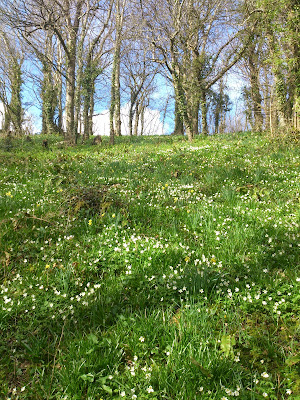I have been out this morning volunteering at my local nature reserve. Clearing scrub in the cold was hard work but when I saw this Holly tree I remembered that I hadn't ticked it off my Tarka list yet. With Christmas only a week away it seems like a good time to do it!
We have a lot of folklore in Britain especially about our wildlife. I don't need to explain what Holly is to you as it is a tree that almost everyone knows so I thought I would tell you about some Holly folklore -
Cutting down a holly tree is supposed to bring bad luck (its ok to take some branches for Christmas decorations though).
Lots of berries on holly tree's is supposed to mean we will have a bad winter.
In a new building or one in which an animal has died holly is hung from the ceiling to keep away evil spirits. The holly must be at least 2 foot long and changed from time to time, the old piece must be burnt.
Holly is supposed to have a power over horses and was commonly used to make whips.
The holly is supposed to be a very powerful and magic tree and is the best wood to make runes with (but you are supposed to ask the tree if you can use it before you cut the wood).
Up until the end of the last war hollies were used to sweep chimneys, the branches were dragged up the chimney to clean the soot from the inside.
Then we come to the Christmas traditions of bringing holly into the house. Although different beliefs were held in different places such as -
A holly branch is often used instead of a Christmas tree in Cornwall.
Never allow holly to be put up as a Christmas decoration before the 25th December.
On Christmas take a leaf from your sprig of holly and place one in each room for good luck.
If a leaf falls out of a vase of holly never burn it.
I hope that like me you have had a great wildlife year. Im looking forward to finding new stuff next year.
Merry Christmas


































